- No Obligations
- Stop Paying Too Much For Your Contractor
- No Spam Calling
- Screened & ID Checked Contractors only!
Types of Cactus Plants & How to Properly Care for One
8
 Types of Cactus Plants & How to Properly Care for One
earlyexperts.net
Types of Cactus Plants & How to Properly Care for One
earlyexperts.net
For those who have a thumb that is not so green, it might be wise to consider caring for a plant that is low-maintenance–extremely low. If you have never had a plant last more than a week in your house, then it’s time to get a cactus. Yes, yes, we know. These spiky plants may not be as widely loved as say, roses or tulips. However, what they lack in popularity they more than make up for in ease of care.
Here are a few of the most popular cacti that you can keep both indoors and outdoors. We’ll show you how to care for these plants so you can take pride in the fact that you finally kept one alive.
Red Cap Cactus
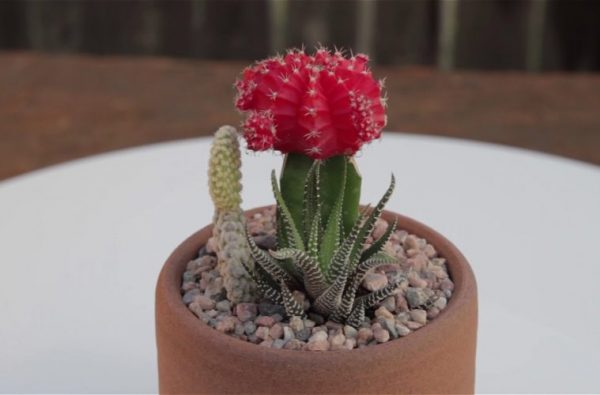
If you like plants with a bit more color, then consider Red Cap, also known as Ruby Ball, cactus. With a reddish-pink bloom on the top of the cactus, this makes for a delightful pop of color for this robust cactus. Keep in mind that this cactus requires less light than some others. It would work best in places where there is a good balance of light and shade. Balconies or patios are perfect for Red Cap cactus.
Fairy Castle Cactus
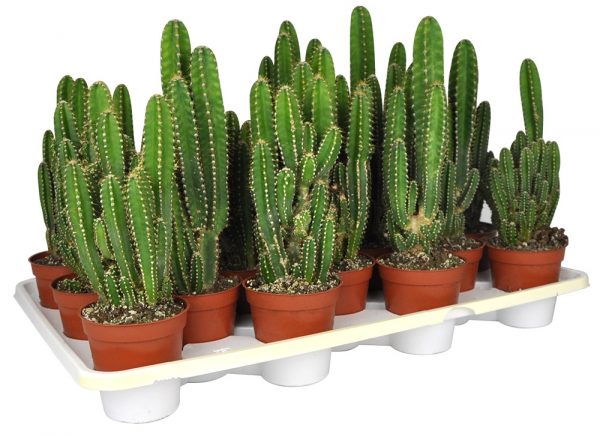
When thinking about a stereotypical cactus, it’s common to think of tall green towers covered in spikes. The Fairy Castle Cactus is a good succulent for beginners. It is an extremely low-maintenance cactus that is easy to care for and slow growing. Once it is fully grown, this succulent will reach around 6 feet in height. If you are looking for something that has a bloom though, this one may eventually have a flower or two sprout from its branches. You might have to wait awhile though since it takes about 10 years for this cacti’s flowers to bloom.
Zebra Cactus
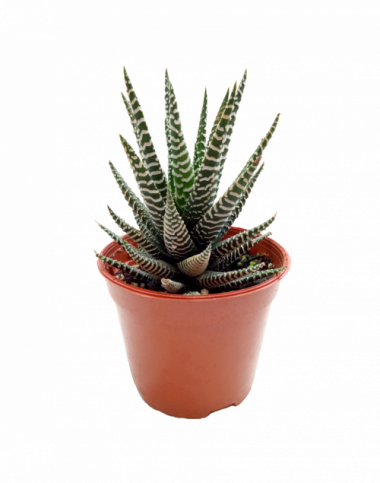
When looking for a plant that is more exotic in appearance, the Zebra Cactus is a good choice. With striped bands of spikes, this stylish succulent somewhat resembles an Aloe plant. It doesn’t require a large amount of light, which makes it perfect for offices, kitchens, and other places in the house that don’t get large amounts of light.
Dwarf Chin Cactus
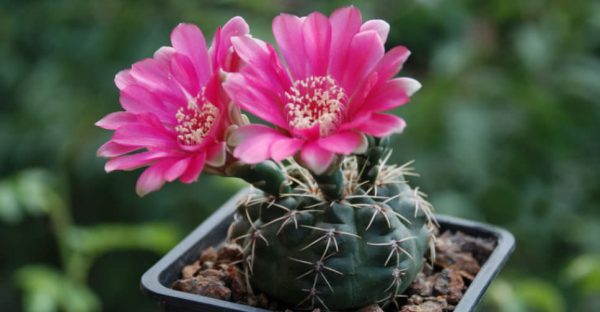
This cute cactus makes a nice addition to smaller containers. If you are looking for a succulent with a lot of colors, the Dwarf Chin Cactus is definitely one of the more vibrant cacti. This cactus has large flowers that grow on top of it varying from pink to red and even white. This low-maintenance plant would make a wonderful addition to any room in your home that needs a little burst of color.
Bunny-Ears Cactus
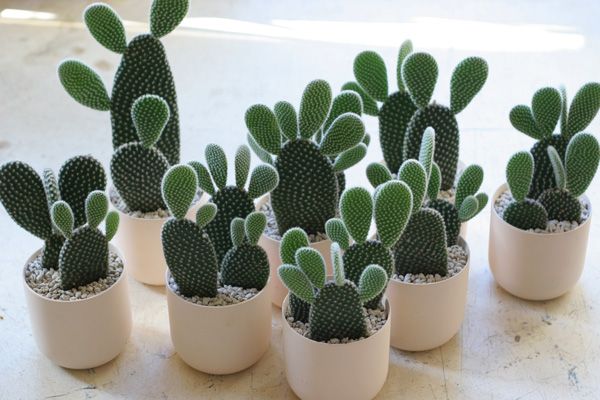
For those who enjoy unique shapes, especially ones that resemble rabbit ears, this is the perfect cactus. The name “Bunny Ears Cactus” is not an exaggeration. With it’s tall, flat pads this cactus looks more rabbit-like than traditional cacti. It generally will not grow beyond 18 inches so this is a great plant to have inside of the home.
Caring for Your Cactus
While cacti are very easy to care for, it’s not completely hands off. They still require some TLC to ensure that they last for a long time. You’ll need to make sure that you keep your cactus in a spot in the house that gets a few hours of direct sunlight each day. Window sills are a great spot to keep most species of cacti. However, there is a such thing as too much light. If your cactus begins to look as if the color is washed out or begins to turn yellow, it could be getting too much light. If that’s the case, then try moving it to a spot with less light.
Watering Your Cactus
Cacti are resilient plants by nature. However, one thing that will quickly kill a cactus is too much water. Overwatering can cause root rot and ultimately destroy the plant. One way to tell whether or not you need to water the cactus is by touching the soil. Soft soil means that there is too much water. If the soil is too dry then you need to give it some water. You may even be able to get away with watering on a weekly or bi-weekly basis during the growing season, but just make sure that you are checking the soil to make sure that you aren’t overdoing it.
Fertilizing Cacti
The growing season for cacti occurs during the spring and summer. During this period, the cactus will need to have more light, water, and of course, fertilizer. It helps to add a little bit before each watering. There is no need to use the full amount that the manufacturer recommends though. Since you are using it more frequently during this time of year it’s okay to limit the fertilizer. Diluting it will ensure that your plant doesn’t get too much fertilizer.
Rotating and Repoting Plants
Cacti are prone to growing towards the light, which might lead to the plant growing at a strange angle. If you want to encourage the cactus to grow in the right direction then rotate the pot once a month. Once a year, you will need to repot your cactus and transfer it to a larger pot. After placing the cactus in the new pot, be sure to put it in a spot with a lot of light and give it a couple of weeks before watering the plant. During the fall and winter months, you’ll reduce the number of waterings to once a month and stop fertilizing it.
Conclusion
For a low-maintenance plant, the cactus is a wonderful pick. With a number of different species to choose from you aren’t only limited to a boring, green plant. So whether you want a more basic cactus or one that produces flowers, there are a number of options to suit your personality. The best thing is that succulents are perfect for those just starting out on their plant care journey and need something that is easy to care for.











